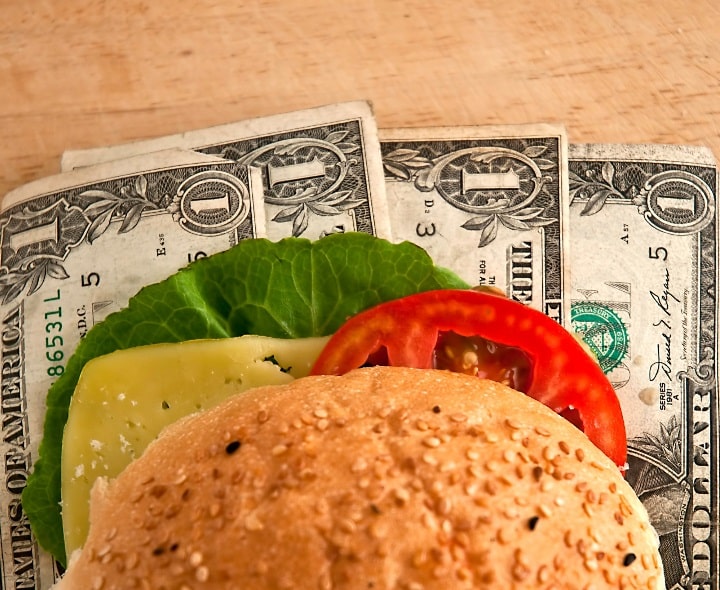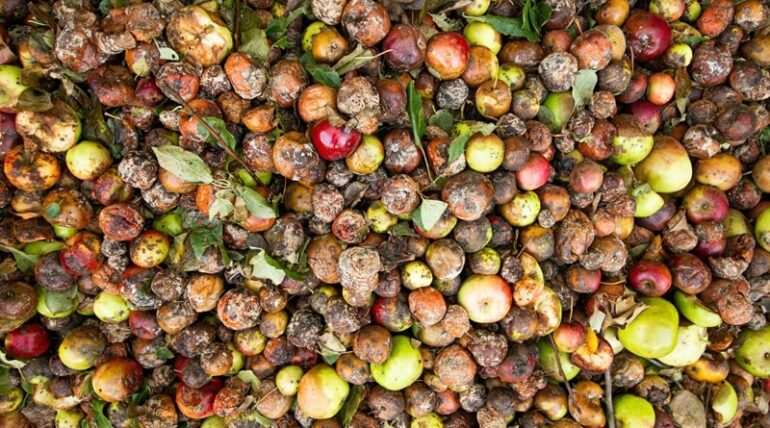Food waste is a social, humanitarian, and environmental problem. And on top of that, it has a huge economic impact on households, businesses, and essentially, the entire world.
Commercial food waste recycling management solutions help address the growing concerns about food waste and its impact on the economy, but many organizations and companies aren’t aware of how it affects their own finances.
So, the big question is: why is food waste bad for the economy?
In this article, we’ll explore the global and national economic costs of food waste, its impact on supply chain dynamics, and the benefits of reducing waste.
Key Takeaways
- Around a third of the world’s food is wasted annually, which translates to about 1.3 billion tons or $940 billion in economic losses.
- Waste in the supply chain does not only include the actual product but also the resources used to produce it: water, labor, fertilizers and pesticides, and energy.
- Food-related businesses can experience up to a 14-fold return on their investment in food waste reduction programs by implementing various food waste strategies.
- Three ways that businesses can implement the circular economy are through food waste upcycling, the implementation of food waste technology, and by partnering with food banks and charities.
- It’s estimated that reducing food waste by 2030 will represent a $155-405 billion economic opportunity.
Understanding the Economic Impact of Food Waste
How does food waste affect the economy?
There are far-reaching economic consequences of food waste that go beyond the actual products. While the product itself is what ends up in landfills, many resources used to grow and sell those products are also wasted.
This results in significant monetary losses along the entire supply chain, provoking economic burdens on all levels, as we’ll see below.
Quantifying the Cost of Food Waste Globally and Nationally
Food waste statistics show that around a third of the world’s food, which translates to about 1.3 billion tons, is wasted annually. Aside from the environmental impact, this food wastage costs around $750 billion annually to food producers. In total, the UN Food and Agriculture Organization claims that the monetary loss due to food waste around the world amounts to $940 billion annually.
The cost of food waste in U.S. is equally shocking, with food waste in landfills becoming a huge problem. In the U.S., 40% of food is lost or wasted, annually costing an estimated $218 billion, or 1.3% of GDP.
With an understanding of the importance of food waste reduction, the United States set a goal to reduce food waste by 50% by 2030. It’s predicted that a 20-50% reduction in consumer food waste on a global level could save an estimated $120-300 billion per year. This shows the importance of cooperation at every level, with each person and business doing their part to reduce the effects of food waste on the economy.

The Ripple Effect on Agriculture and Production
Global food waste on farms amounts to 15.3% of the food produced globally, which translates to 1.2 billion tons per year. This has a huge economic impact on individuals in the agricultural sector.
Food waste at this level is generated for a range of reasons, such as problems with pests and weather conditions and improper infrastructure and technology, but a large portion of waste is due to consumer behavior and expectations. If the price on the market is too low, farmers may not have the resources to justify the labor to harvest them, or if the produce is out of season or not aesthetic, then retailers and consumers don’t want to purchase it. What are the consequences of this reality?
To start, resources are being used on produce that’s not being consumed. Agriculture consumes a large amount of water, and when food goes to waste, the water used to produce it is also wasted. When fertilizers and pesticides are used to maximize yields that aren’t used, unnecessary pollution and waste are generated. It also consumes energy, whether due to farming technology, the refrigeration and storage of products, or even transportation.
For the above reasons, farmers usually experience a significant economic loss. That said, what is the impact of food waste on society?
Aside from the financial instability in the agriculture sector, production costs may be higher, leading us to our next point.
Impact on Retail and Supply Chain Dynamics
Once food passes manufacturing, it’s exposed to further waste due to overproduction and overstock, poor inventory management, and aesthetic standards. There’s also a widespread misunderstanding of food waste expiration dates, leading consumers to choose products with further expiration dates rather than ones that should be consumed first, leading to increased waste at the retail level.
Loss in the supply chain guarantees one thing – increased prices for everyone involved. Farmers raise their prices due to substantial losses, and retailers have to increase their prices to make up for their own expected food waste and to ensure profitability. The result?
Everyone along the supply chain is paying more for their products. Resources are being lost, healthy and edible food is being thrown away, and individuals and businesses in the food industry are experiencing higher prices.
The Circular Economy and Food Waste
A circular economy is a model of production and consumption where products and materials are kept in circulation through the use of maintenance, reuse, refurbishment, remanufacture, recycling, and composting. This concept focuses on maximizing the use of resources, working to create a more sustainable economy, and as a result, reducing the economic impact of food waste.
Creating a circular economy can do wonders for the fight against food waste. One of the ways that businesses can apply this model is through a food waste audit. This is a systematic approach that helps businesses quantify and analyze the food waste being generated, providing crucial insights into where and why waste occurs.

Implementing Circular Economy Principles in Food Waste Management
Reducing waste isn’t only good for a business’ finances but for their reputation as well. But how do businesses adapt to a circular economy?
Here are 3 practical approaches businesses can take:
- Food waste upcycling: This involves taking food waste that would otherwise be discarded and converting it into new products or ingredients for consumption or industrial use. This may include turning food waste into biogas through anaerobic digestion or transforming it into fertilizer, animal feed, or other products.
- Implement food waste technology: Food waste disposal technology offers innovative solutions to prevent, monitor, manage, and repurpose food waste. This technology can be used all throughout the supply chain, such as for tracking food waste generation, repurposing it into useful resources, predicting food waste occurances, aneorobic digestion, mechanical composting, and much more.
- Partner with food banks and charities: By making partnerships, supermarkets, grocery stores, and other food-related businesses hold themselves more accountable. In addition, the government passed the Bill Emerson Good Samaritan Food Donation Act to promote food donations. This act encourages food donations to nonprofit organizations by minimizing liability if the food causes harm to recipients.
Advantages of a Circular Approach in Reducing Economic Loss from Food Waste
The circular economy and food waste reduction are closely related. The circular economy can be seen as a solution to mitigating food waste-related economic losses. In a circular economy, businesses prioritize the efficient use of resources and materials, which can lead to cost savings by reducing the need for new raw materials. It also encourages businesses to gain maximum value from each resource. This improves efficiency, yield, and the amount of earnings you can make from a single resource.
Even more, upcycling and repurposing reduce the losses associated with food waste. As discussed above, loss is experienced in different ways along the supply chain. When food is wasted, there’s also a loss in labor, energy, and water used in the agriculture sector. By adapting the circular approach, all of these resources are being put to use rather than wasted.
Not only does the circular economy work to prevent waste, but it can also improve yield and enable businesses to earn even more from their products.
Long-term Economic Benefits of Reducing Food Waste
Businesses that implement waste management strategies can expect to see long-term food waste reduction benefits. In fact, a study shows that food-related businesses such as canteens, hotels, and restaurants can experience up to a 14-fold return on their investment in food waste reduction programs.
The 14:1 return on investment comes from food waste management strategies such as adapting the circular approach model, increasing the share of food that is sold to customers, introducing new product lines from food that would have otherwise been discarded, and even turning food waste to energy.
The combination of reducing food and resource waste while creating new revenue streams means that businesses can experience long-term benefits – all while helping the environment.

Global and National Policies on Food Waste
Various laws and initiatives have been passed so that the benefits of food waste reduction can be experienced on a global and national level.
Let’s take a look at the progress they’ve made:
International Efforts and Agreements
The Environmental Protection Agency (EPA) has been actively involved in international efforts to address the food waste economy. In September 2021, EPA Administrator Michael Regan and USDA Secretary Tom Vilsack joined Champions 12.3, an organization that takes action to reduce food loss and waste globally. Their goal is to reduce global food waste by 50% per capita at the retail and consumer levels and decrease food losses in production and supply chains by 2030.
There has also been great collaboration to bring awareness to this crisis. A UN Food Systems Summit was held to discuss new actions to reduce waste and create more sustainable solutions. During the summit, President Biden committed $10 billion to initiatives that strengthen food security, address climate change, and promote inclusive food systems.
A Technical Report and Practical Guide were also released with measurement tools based on scientific principles, providing valuable information to reduce waste at every level of the supply chain.
These are just a few of the ways that the EPA continues to emphasize the importance of addressing food loss and waste. Their work with organizations such as UN Environment, G7 and G20 forums, World Bank, OECD, UN Food and Agriculture Organization, and the World Resources Institute has helped to raise awareness on a global scale.
U.S. Food Waste Policies and Their Economic Impact
There has been an increase in initiatives and food waste laws in the U.S. to help reach the goal of reducing food waste by 50% by 2030. This includes tax breaks and local laws for both businesses and residents. As mentioned above, the Bill Emerson Good Samaritan Food Donation Act was also approved to encourage food donations by protecting food donors from liability.
The EPA, USDA, and the Food and Drug Administration (FDA) formed a Federal Interagency Collaboration, where they work with communities, organizations, and businesses, along with partners in state, tribal, and local government, to create sustainable solutions to reach its goal.
The EPA comments on the progress, stating:
“The Business and Sustainable Development Commission estimates that by 2030 reducing food waste will represent a $155-405 billion economic opportunity. Investing $14 billion in cost-effective solutions per year over the next ten years could reduce food waste by 45 million tons for each of those years, which would result in $73 billion in annual net financial benefit for the U.S., reduce greenhouse gas emissions by 75 million metric tons, save four trillion gallons of water, and recover the equivalent of four billion meals for people in need. Over ten years, it would create more than 51,000 jobs, all while achieving the U.S. 2030 reduction goal.”
Conclusion
Shapiro is dedicated to providing organic recycling and waste management solutions to help the U.S. reach its goal of reducing the economic effects of food waste. Over the years, our solutions have kept over 1,060,000,000 pounds of organic waste out of landfills all around the country.
By having an external waste management partner, your business can do its part in reducing waste. At Shapiro, we have over 200 food and beverage processor facilities all around the country and beyond.
Contact us to learn how we can help your business reduce the economic loss associated with food waste.
Baily Ramsey, an accomplished marketing specialist, brings a unique blend of anthropological insight and marketing finesse to the digital landscape. Specializing in educational content creation, she creates content for various industries, with a particular interest in environmental initiatives.



